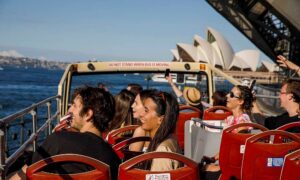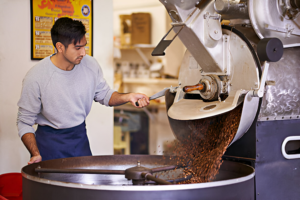Chile is a country full of different types of festivals, which you can attend during many times around the year. Whether they are music festivals, gastronomic or cultural festivals, getting to know what is going on in Chilean culture is always fun.The 3 major festivals of Chile are:

Fiesta Tapati (February 1)
Tapati Fest takes place on the first half of the month of February on the Easter Island. You might have heard about Easter Island or Rapa Nui before. It is that Chilean Island where you can find those big statues that seem to come from under the ground, portraying big human-like heads. Although the heads are what most people know about these statues, some of them actually have bodies buried underground and are several meters high.
Tapati Rapa Nui, although it sounds full of mystic, means nothing less and nothing more than Rapa Nui week. So, I guess that for all of you that think the name of this festival has a mysterious spiritual meaning, that would be a bit of a disappointment, right? But do not lose the interest that easy. The festival actually has its mystical and spiritual part.
The main attraction of Tapati Rapa Nui is body painting! Now, you are probably asking yourself what is so special about it? I mean, we all have been to some event where you can find body painting and, in some cases, there are great artists in charge of this activity. However, this is not the usual body painting. In Takona, symbols used to decorate your body do have a special meaning, taken from the traditions of the island and your personal experiences or those from your family tradition. They will also have to be explained theatrically to a jury. And the pigments used for Takona are completely natural, isn’t it great?
Besides being painted with symbols from head to toes, you can also take part in the many team activities and competitions. You can find calm activities like telling and listening to stories, legends and myths; dancing, singing their traditional music or some more dangerous and challenging games where you will have to prove your strength and courage by swimming, canoeing, horse racing, surfing on the traditional Rapa Nui style or, the try the island’s special competition, Haka Pei.
For those of you who have never been to Rapa Nui fest, Haka Pei is a traditional extreme sport. It consists in sliding down a hill over banana leaves. Just like kids sliding in the snow, just without the snow and on a very rustic slide and much faster! Are you crazy enough to try it?

El Carnavalón(February)
El Carnavalón is also celebrated in February. It does not take place in Rapa Nui Island, though. It is celebrated on the northern regions of Chile, known as San Miguel de Azapa, Putre, Copda and Socoroma. The festival is a mixture of Hispanic and native Latin American cultures. It is celebrated in honor of character created to represent the Carnival. Jose Domingo Carnavalon, better known as Ño Carnavalon comes alive every February, bringing joy to those who participate in the festival. A puppet that is carried around the city with joy represents it.
This traditional fest is celebrated exactly forty days before Lent, but it is not a Catholic tradition. In fact, Ño Carnavalon comes to greet those who still believe and worship God Inti represented by the Sun, and Pachamama, the Goddess of earth. The fest is a way to thank and welcome fertility, both for the soil, the crops and the people. Many young women wait for him to come and bring them a child along the year, and men wait for it too so they can ask its blessings to their land and start the first gathering session.
This festival lasts a complete week, including during Ash Wednesday, which is a Catholic tradition. Usually Ash Wednesday is a sad day full of prayers and constriction. In these northern Chilean Regions, however, the party continues as Carnavalon passes by. This was the only way native indigenous people of Chile managed to keep their original traditions from the European repression.
Nowadays, Chilean people enjoy freedom of cult, but they already have this tradition too attached to their roots. Everybody waits for Ño Carnavalon to visit them and when he is done with all the houses and lands in the region, he finally comes back to its place in the mountains to stay buried again until next year.
Getting to know the tradition and enjoy the environment of this festival is a great and fun way to spend some time in Chile. Understanding the culture and history behind this traditional practice can open our minds to a better appreciation of ancient Latin tribes. Just a warning. You should know that this type of festivals is usually filled of alcohol. Do not panic when you see the level of alcohol consumption raising unstoppably in the middle of the festivities.

Semana Valdiviana or Valdivian Week (February 9)
February seems to be the month of festivals in Chile. If you are interested in partying continuously in the traditional Chilean style and getting to know their culture, February is certainly a great month to visit this interesting country. You can look around different regions of Chile and find some festival going on. Rapa Nui has its Tapati, Northern Chile has Carnavalon, so what does southern Chilean people have?
The Valdivian Week is celebrated in the southern regions of Chile during the same month when Rapa Nui Tapati and Carnavalon in northern Chile takes place. It seems to be some kind of competence, right? Probably a “Who parties better” kind of thing? Well, I do not know if that is the way Chilean people take it but as you see, February is a busy month wherever you go in Chile.
The region of Valdivia in Southern Chile celebrates on February 9th its anniversary of foundation festival. But of course, they are not going to party only on this day! Why would they do that when Rapa Nui has two weeks and Northern Carnavalon lasts one complete week? Of course not! They celebrate their city for an entire week too, as it should be!
The Valdivian Week is full of activities you can take part on. It starts on its foundation day, which means February 9th. Culture, sports, and entertainment cannot be absent in this day. Valdivia enjoys a beautiful location around the river Calle-Calle, which by the way is a funny and weird name for the river, don’t you think?
Anyway, its closeness to this river push all activities to revolve around it. The most important and unique event that stars at this festival is a sailing parade along the river. Several boats and vessels sail over the river, showing its structure, elegance and velocity. One of them will be choose as the Queen of Rivers, which is a total honor to be named, so everyone is after the prize. The festival closes with some fireworks over the river. I think that is a great view to a picnic night out, don’t you agree?

The only thing standing in your way of an adventure in Chile is that your bags are still unpacked. But before you get to packing, make sure to visit the German website from Backpackertrail. There you can find more information on what to expect during your journey.
List of other major festivals
- January – Festival del Huaso de Olmué is a folklore music festival that takes place around January 19th
- February – As we read already, February is a busy month. Tapati Rapa Nui, Carnavalon, Valdivian Week. Festival Viña del Mar (February 23rd) is also one of the biggest festivals in Chile. It is dedicated to Latin music and displays very well-known Latin artists.
- March –Grape Harvest Festival (End of March). Taking into account that Chile has certain fame for its wine, a Grape Harvest Festival is a basic one. I am sure it is very interesting.
- April – Who have not heard about Lollapalooza (April 29th)? Really, what rock have you been hiding under? Lollapalooza is another very big music festival in Chile. The most waited occasion for rock, pop and especially Indie fans.
- May – Día de las Glorias Navales (May 21st) is a day to remember those who gave their lives in the naval war against Peru.
- June – New Year has come! No, I did not drink any weird substance when writing this article. June in Chile marks the beginning of a new year in Indigenous Calendar (June 23rd). Fiesta de La Tirana takes place on June too.
- July – Winter Carnivals and the Festival of the Snow. Still, I am totally sober people! But the southern hemisphere has all the seasons in a different time of the year, so it is possible to play with snow on July.
- August – Santiago Festival (18th – 25th) with music, art and other cultural activities in Chilean capital city.
- September – National Holidays (September 2nd) when you can enjoy the best of Chilean cuisine and take part of some fun traditional games and competitions. Horse races are also a thing.
- October – Columbus Day (October 12th)
- November – -Festival of Foreign colonies (. This is a day for immigrants living in Chile to honor their countries of origin and share some of their culture with Chilean people.
- December – Christmas (24th – 25th)








